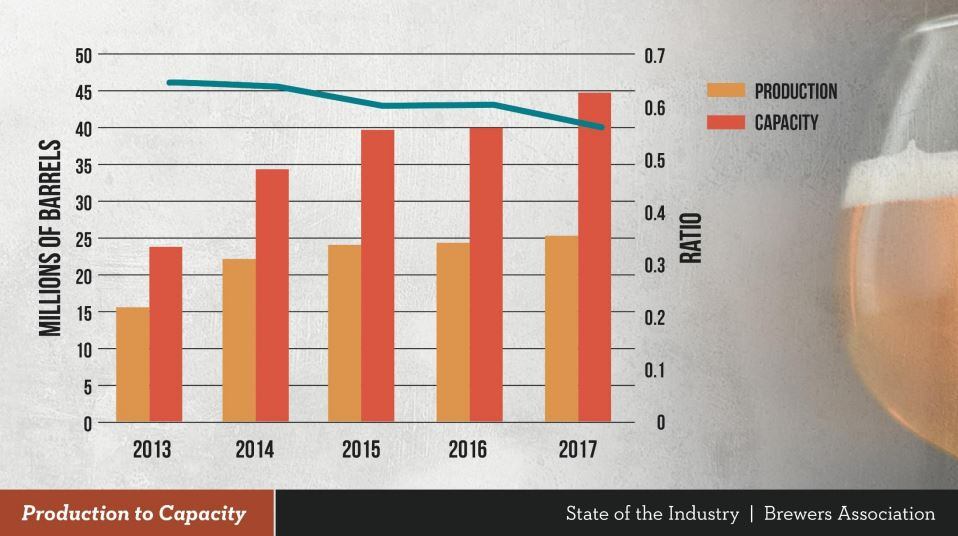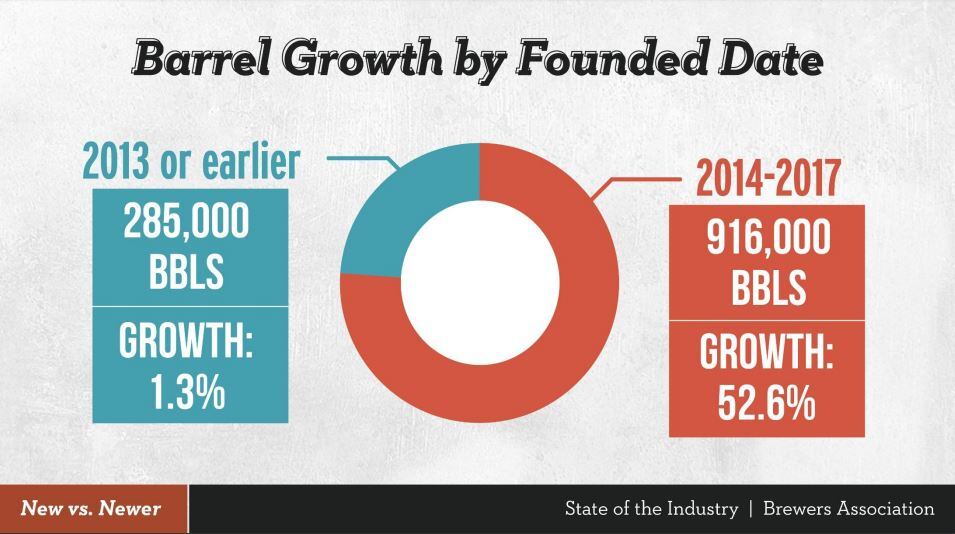The total US beer market by volume was down 1% last year, whereas craft grew by 5%, Brewers Association (BA) data showed.
“We’ve now settled into longer term growth pattern in the mid-single digits,” BA chief economist Burt Watson said at the Craft Brewers Conference in Nashville, Tennessee, this week.
“While that might be disappointing after years of 18% growth, I think this is more realistic as a long term growth rate as something we should all come to expect.”
Within the craft beer segment, there are some clear players driving growth and those that are struggling, according to Watson.
Regional breweries seem to be hurting the most in a decelerated craft beer market, growing at 1% in 2017, partly due to changing habits among beer drinkers.
The BA has seen a trend away from off-premise retail beer sales to experiential drinking occasions such as those offered in local taprooms and tasting rooms.
While not the same size as beer behemoths AB InBev or Molson Coors, it is still “tougher to be bigger” even as a regional independent brewer in the craft beer market, added Paul Gatza, director of the BA.
Watson added that 60% of regional craft breweries did find some growth through innovation and a larger geographic footprint, but that the market will continue to be challenging for a number of years.
Microbreweries and brewpubs add experiential element
On-premise beer growth has been on the rise due to the experiential component visiting a microbrewery, taproom, or brewpub provides the beer drinker, according to Watson and Ganza.
“Last year, we saw drinks at the brewery grow to 2.7 million barrels. These places aren’t only places for great margins, but they’re places for innovation, they’re places for brand building,” Watson said.
“The beer drinker is changing. It’s not just drinking the beer anymore. It’s drinking the beer and posting a picture on Instagram or ‘checking in’ on Untapped or rating a beer on Beer Advocate,” Ganza continued.
Microbreweries, in particular, had a successful year growing at 17% last year to 5.7 million barrels. Brewpubs were close behind with 15% volume growth hitting 1.5 million barrels, according to the BA.
“They’re now clearly the growth engine of craft,” Watson son. “It’s amazing to see how the aggregation of small companies have grown into such a big category.”
Watson predicts microbreweries will continue to see double digits growth rates for a few more years based on consumers’ interest in engaging with local, community-oriented environments. The market for these type of establishments is also underutilized as indicated by the BA’s current production to brewing capacity ratio gap.

“Collectively, there’s a lot to be had out there,” he added. “If we grew at 5% it would take the industry 12 years to use up all the existing capacity that’s out there right now.”
New entrants on the rise
Despite a record number of breweries closing (165) last year, the pace of new entrants to the market (997 openings in 2017) has not slowed and makes up a majority of craft beer growth, BA data revealed.
Breweries founded between 2014 and 2017 produced 916,000 barrels accounting for 53.6% of volume growth compared to older breweries (founded in 2013 or earlier) with 285,000 barrels at 1.3% growth.

While a stark contrast between established and new brewers, Watson did have a word of warning for to craft beer newcomers.
“To the new breweries in the room who are experiencing those 50% growth rates, I encourage you to build in realistic expectations for your business,” Watson said.
“While you’re growing fast now, don’t expect that you’re going to beat the odds that so many older, more experienced breweries were not able to.”
Current craft brewers should also embrace these new breweries who are just starting out as they will likely bring much-needed innovation to the category.
“Whether you like new entrants are not, more are coming,” he said. “New entrants bring new innovation, they bring new ideas, they bring new energy, and they’re going to make the entire industry better.”
